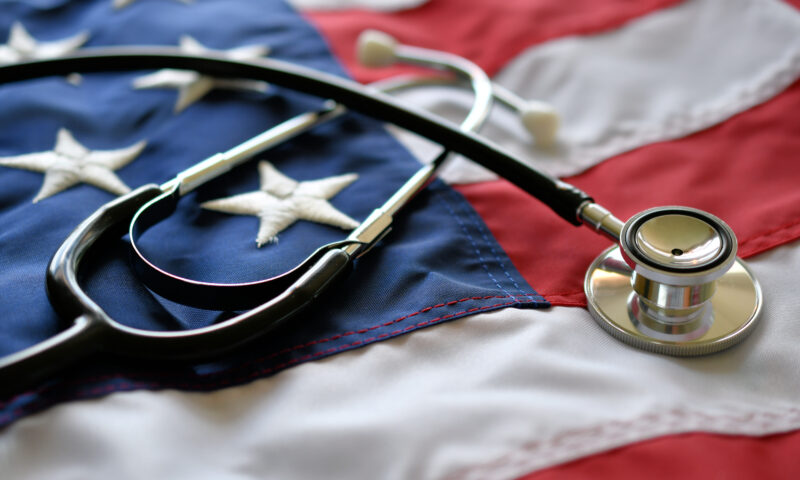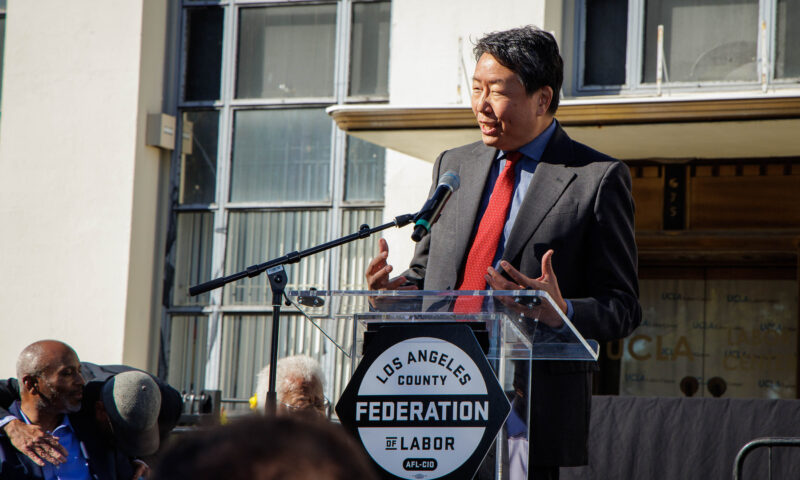Labor & Economy
Tracking Occupational Health in California

A day laborer falls off an unsafe scaffold and dies. A custodian gets work-related asthma from cleaning products. A painter is tested and found to have lead poisoning. Every year, thousands of California workers are injured on the job or become ill as a result of health hazards at work.
Twelve workers tragically lose their lives on the job each day in the United States, with 409 workplace deaths in California in 2009. Latino workers are particularly at risk. In Los Angeles County, where nearly one quarter of the state’s fatalities occur, Latino workers have a 50 percent higher fatality rate than non-Latino workers.
Work-related injuries and illnesses result in substantial human and economic costs, and can be prevented. Having the data necessary to understand the problem is the first step.
A health indicator is a numerical value or statistic that helps us measure the state of health in a community or group. Occupational health indicators are a set of statistics that help explain the current state of worker health.
Occupational health indicators can be tracked over time to tell us whether our health is getting better or worse, and where we may need to invest prevention resources. These indicators can be compared with those of other states, the U.S. as a whole, or other countries. Using indicators over time can help us to track our progress toward improving health.
The Occupational Health Branch (OHB) of the California Department of Public Health tracks California employment demographics and 20 health indicators to understand and share trends related to worker injuries, illnesses, exposure and other factors that influence occupational health. OHB’s website presents data annually, starting with the year 2000.
- See California Occupational Health Indicators full report, 2003-2008 (PDF) for the most recent data (43 pages)
- See Data Tables for California Occupational Health Indicators for individual indicator data
- See California Worker Health and Safety at a Glance (PDF) for a brief summary with highlights of recent data
- See here for more on Occupational Health Indicators
- See here for more on OHB’s programs
OHB is dedicated to improving worker health and safety through prevention activities. We gather information on job hazards, work with others to test new approaches to prevent worker injury and illness, and assist with making changes at the workplace. For more information, visit our website.
For future Occupational Health Watch updates, subscribe.
Barbara Materna is chief of the Occupational Health Branch of the California Department of Public Health.
(Note: This post first appeared on Labor’s Edge.)

-

 Pain & ProfitNovember 3, 2025
Pain & ProfitNovember 3, 2025Despite Vow to Protect Health Care for Veterans, VA Losing Doctors and Nurses
-

 Column - State of InequalityNovember 6, 2025
Column - State of InequalityNovember 6, 2025Congress Could Get Millions of People Off of SNAP by Raising the Minimum Wage, but It Hasn’t — for 16 Years
-

 Latest NewsOctober 29, 2025
Latest NewsOctober 29, 2025‘I’ve Never Seen Anything Like it.’ Aggressive ICE Raids Led One Man to Ask: Should I Self-Deport?
-

 Latest NewsOctober 22, 2025
Latest NewsOctober 22, 2025Prop 50 Supporters See a Litmus Test for Democracy
-

 Column - State of InequalityOctober 23, 2025
Column - State of InequalityOctober 23, 2025The Loss of Kent Wong and the Future of Labor and Immigrant Rights in California
-

 Column - California UncoveredOctober 24, 2025
Column - California UncoveredOctober 24, 2025‘We’re the Resistance’
-

 Latest NewsOctober 31, 2025
Latest NewsOctober 31, 2025Pennsylvania Gas Producer Sues Capital & Main Over Its Reporting on Health Risks
-

 The SlickNovember 5, 2025
The SlickNovember 5, 2025The David vs. Goliath Story of a Ranching Family and an Oil Giant

